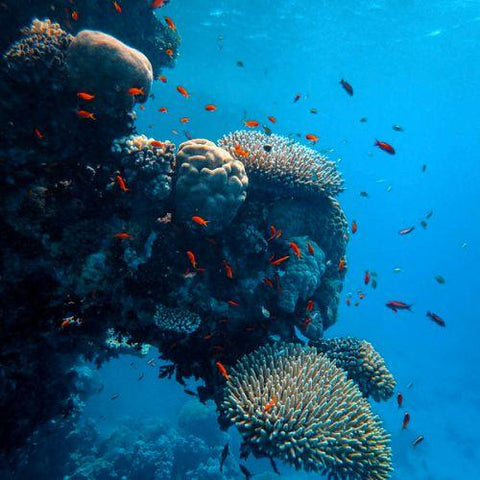London’s River Thames was declared ‘biologically dead’ in 1957, but now, thanks to decades of clean-up efforts, it's home to hundreds of species — including sharks, seals, and seahorses!


Photograph: Canva
After 60+ Years, The River Thames Can Support Marine Life
London’s River Thames is one of the most iconic rivers in the world! Measuring at 346km in length, the River Thames is the longest river in England. Around 60 years ago, the River Thames was declared ‘biologically dead’ due to its inability to support marine life.
Now, according to the State of the Thames report, the River Thames is “home to myriad wildlife as diverse as London itself” — supporting 115 fish species, 92 bird species, and seals.
The Zoological Society of London (ZSL) discovered that decades of clean-up efforts have brought down the levels of harmful chemicals. “This report has enabled us to look at how far the Thames has come on its journey to recovery, and sets baselines to build from in the future,” ZSL’s Alison Debney said.


Photograph: Hollie Adams / Bloomberg
Why Was The River Thames Declared ‘Biologically Dead’?
You're probably wondering — how can a river become ‘biologically dead’? Well, during the 18th century, London’s population boomed, and so too did the industrial activity. As the nearest flowing body of water, the city’s household and industrial waste was routinely dumped in the river.
In 1858, the sewage clogging the River Thames literally caused a “Great Stink” — which led to more than a century of the river’s health declining. Then, in 1957, parts of the River Thames were declared ‘biologically dead’ due to the almost non-existent amount of oxygen in the river. Also meaning the river was incapable of sustaining marine life. Authorities started monitoring key environmental factors and investing in better sewage treatment facilities — sparking an historic turnaround!


Photograph: Lucas Peng/ Unsplash
Climate Change & Microplastics Named As Key Threats
It’s fantastic news that the number of marine species — like seahorses, eels, seals and even sharks — have increased as a result of conservation efforts. But, the River Thames still faces many challenges, including the impacts of climate change and the growing number of microplastics found in the water.
Climate change is already impacting the Thames. Every year, the temperature of London’s waterway increases by 0.2⁰C — with the water level also rising by 4.26mm per year on average since 1990. "This will undoubtedly affect the estuary's wildlife, leading to changes in life-history patterns and species ranges," the ZSL said in the report.
Whilst the toxic pollution has diminished in the Thames, microplastics haven't, posing a far greater threat to wildlife.


Photograph: Kris Fields / Unsplash
London’s New “Super Sewer” Will Protect The River’s Wildlife!
To accommodate for London's growing population — plus the increasing frequency and intensity of storm events — London is building a “super sewer”, expected completion, 2025.
According to the report, the Thames Tideway Tunnel will “capture and store most of the millions of tonnes of raw sewage that currently overflow into the estuary,” which will protect the Thames from future pollution. Capturing around 95% of the potential sewage spills will help wildlife to flourish.
“Estuaries are one of our neglected and threatened ecosystems. They provide us with clean water, protection from flooding, and are an important nursery for wildlife,” said Alison. “The Thames estuary is critically important in our fight to mitigate climate change and build a better future”.
It’s amazing to see the impact of these ongoing conservation efforts! Now that the River Thames is no longer ‘biologically dead’, the huge body of water can support marine life and encourage healthy biodiversity.
If you love keeping up to date with conservation projects that are happening all around the world, take a look at our Eco News category and the blogs below.
UK’s Largest Seagrass Restoration Project Will Absorb Carbon 35x Faster Than Rainforests
Disney Goes Down Under To Rewild Australia’s Red Centre
Re:Wild, Aussie Ark & Wildark To Create New Wildlife Sanctuary In NSW



